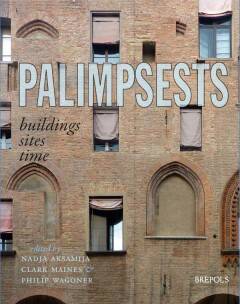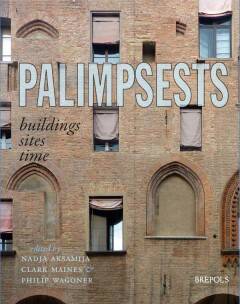
- Afhalen na 1 uur in een winkel met voorraad
- Gratis thuislevering in België vanaf € 30
- Ruim aanbod met 7 miljoen producten
- Afhalen na 1 uur in een winkel met voorraad
- Gratis thuislevering in België vanaf € 30
- Ruim aanbod met 7 miljoen producten
Zoeken
Omschrijving
The original notion of the palimpsest -- one that embodies writing, erasure, and rewriting -- lends itself especially well to the interpretation of architectural monuments and landscape sites. These are by their very nature often modified significantly over time, leaving them to display a complex layering of forms and a sedimentation of meanings related to the different episodes in their ongoing lives. This volume explores and develops the idea of the architectural and site palimpsest through eleven case studies drawn from different parts of the globe, from Europe and America to Africa and South Asia, and ranging in time from Roman Pompeii and medieval Cairo to modern-day Rwanda and contemporary New York. The purpose behind such chronological and cultural breadth is to provide a multiplicity of examples from which a theoretical model of the three-dimensional palimpsest can be developed, and which would be applicable to monuments and sites from different historical periods and vastly diverse geographical contexts. While there have been many studies of buildings and sites investigating specific, synchronic episodes in their biographies, very few have approached them from the diachronic perspective of the palimpsest, that is, recognizing that the fourth dimension-that of duration-is essential to understanding them as both historic and contemporary entities. As a hermeneutic tool, the concept of the palimpsest embraces the totality of time compressed in a given monument or site, while permitting the extraction of a series of legible and meaningful episodes that allow us to read those palimpsests as a narrative of historical processes, whether that narrative is one of deliberate revision, or one of unintended effect. This volume presents a range of methodological possibilities comfortably nestled under a single conceptual umbrella, demonstrating how the notion of the palimpsest can become a paradigm-shifting framework for future, collaborative research in architectural and landscape history.
Specificaties
Betrokkenen
- Auteur(s):
- Uitgeverij:
Inhoud
- Aantal bladzijden:
- 247
- Taal:
- Engels
Eigenschappen
- Productcode (EAN):
- 9782503570235
- Verschijningsdatum:
- 20/02/2018
- Uitvoering:
- Paperback
- Formaat:
- Trade paperback (VS)
- Afmetingen:
- 221 mm x 279 mm
- Gewicht:
- 979 g

Alleen bij Standaard Boekhandel
+ 180 punten op je klantenkaart van Standaard Boekhandel
Beoordelingen
We publiceren alleen reviews die voldoen aan de voorwaarden voor reviews. Bekijk onze voorwaarden voor reviews.











